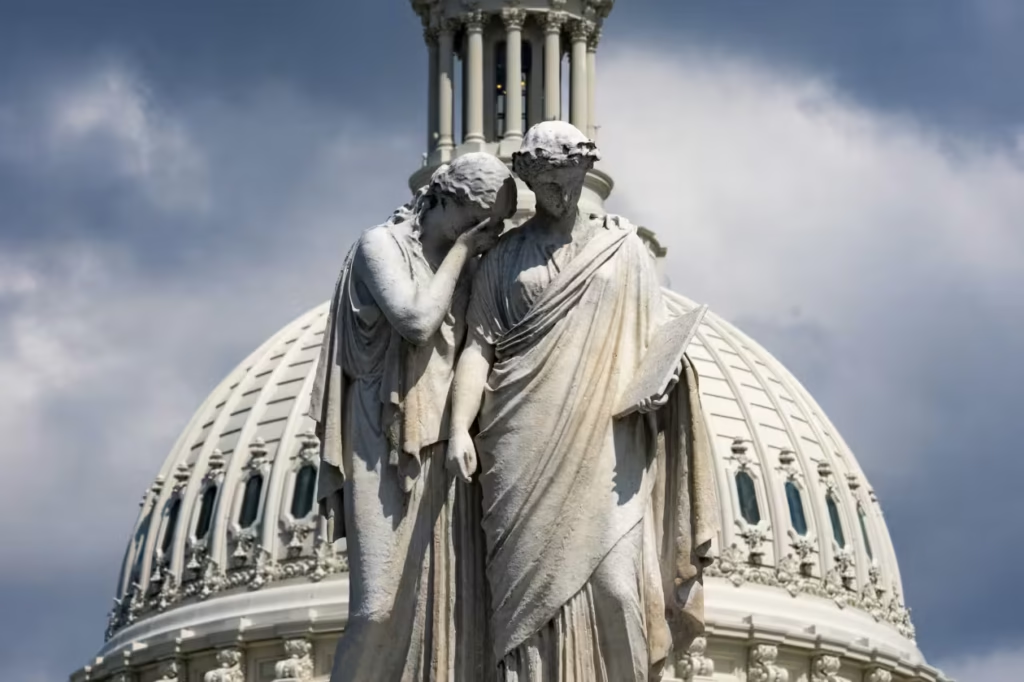Due in part to rising expectations of rate reduction by the Federal Reserve in 2025, investors have benefited from a more than month-long rally in the 30-year U.S. government bond, which has driven its yield below 5% in June.
However, a different trading dynamic in July might replace the bond market boom of June and cause a new round of volatility in Treasury bills, the government’s shortest-term debt obligations.
With the yield on the 1-month Treasury note BX:TMUBMUSD01M rising toward 4.22% on Monday, there were indications that this volatility was starting to manifest.
As evidenced by the steep selloff in the 30-year bond in April and May, investors’ worries about the fiscal outlook and a growing federal deficit disproportionately affected longer-duration U.S. government bonds for a large portion of this year. During severe selloffs, bond yields can soar sharply because bond prices and yields move in the opposite manner.
According to Derek Tang, an economist at Monetary Policy Analytics in Washington, recent stable inflation data, expectations for a shaky labor market, rising market-implied probabilities of Fed rate cuts beginning as early as July, and conjecture that President Donald Trump may select a successor to Fed Chair Jerome Powell who might lean more toward lowering interest rates sooner have all contributed to easing those fiscal concerns.
The impartial Congressional Budget Office now estimates that the Senate’s modifications to Trump’s massive tax and spending cut measure may raise the national deficit by over $3.3 trillion between 2025 and 2034. Treasurys must be issued more frequently when there is a government deficit in order to cover the difference between revenue and spending. How much of such issuance will be in the shape of short-term T-bills with maturities of one year or less, or longer-dated ones with maturities ranging from two to thirty years out, is currently one of the most crucial considerations. During a news conference last week, Trump, who hopes to sign the final version of the bill by July 4, stated that he prefers T-bills to longer-dated Treasurys, stating that “I’ve instructed my people not to do any debt beyond nine months or so.” Read: The stock market reached record highs after a two-month rise, but be aware of these hazards in July. According to Lawrence Gillum, chief fixed-income strategist for broker-dealer LPL Financial, based in Charlotte, North Carolina, worries about an excess of Treasurys and potentially a lack of demand will resurface if the president’s bill passes Congress and is signed into law, but only in the short-term portion of the market. According to him, these problems could result in lower investor demand at next bill auctions and higher short-term T-bill rates than would otherwise be the case. But according to Gillum, yields on longer-dated Treasurys may decline, providing some respite for investors. “The big risk is that market participants balk at the amount of bills that are coming to the market,” he stated by phone. “They might not wish to process everything. This has the potential to upset the front end of the curve and raise yields there. He points out that up to 20%, or a little more, of the government’s existing debt should be in the form of bills, according to the Treasury Borrowing Advisory Committee, which advises the U.S. Treasury. However, this percentage could rise. Gillum stated that if the package fails to pass Congress or become law, “then we have to worry about the debt-ceiling limit,” and that without a new debt-limit agreement, the United States could run out of money in August to pay for all of its obligations. The cap on the total amount of money the government can borrow to pay off its current debts is known as the debt ceiling. According to the strategist, “Treasury won’t have the money to pay its bills” at some time in August if Congress doesn’t raise or suspend this cap, which could have the most detrimental effect on bills that are due to mature that month.
Due to the absence of significant data releases, Monday’s trading session was very quiet. Month-end purchasing seems to be the main cause of the day’s declines in the 2-BX:TMUBMUSD02Y, 10-BX:TMUBMUSD10Y, and 30-year yields BX:TMUBMUSD30Y. The DJIA SPX COMP, one of the three main U.S. stock indexes, ended the day higher.
“We might be heading into a very choppy period” for the Treasury market, predicts Tang of Monetary Policy Analytics.
The Trump administration now has “a little more wiggle room in terms of financing costs so that if there is a plan to increase borrowing, you could argue that the overall cost could be lower because yields are so low,” Tang said over the phone on Monday, referring to the recent drop in bond yield payments.
However, even if Trump’s measure is signed into law, volatility in T-bills cannot be totally ruled out. nevertheless, “you could convince the market that short-term yields will be lower even with greater supply, while longer-run yields could rise on any loss of Fed credibility or if inflation expectations blow up.”





